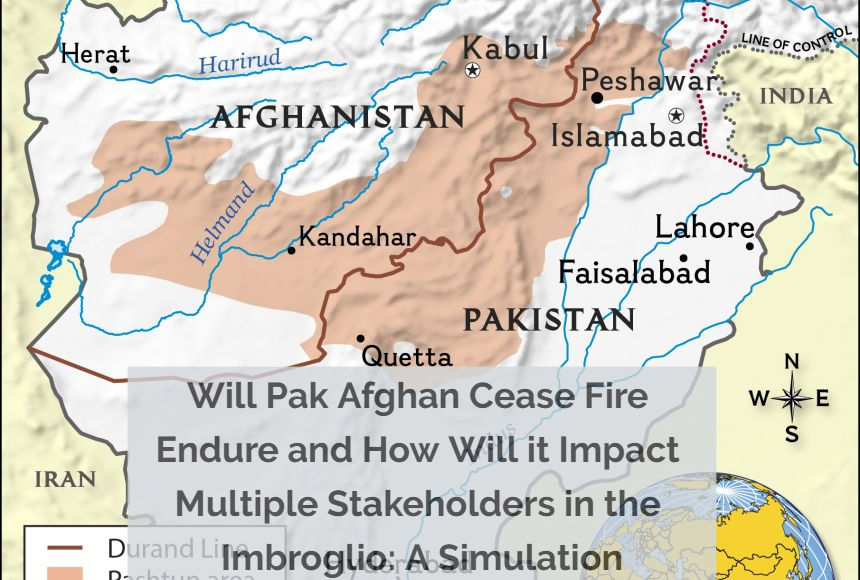Taliban Higher Leadership Churn
- Security Risks Research
- May 19, 2023
- 3 min read

In the latest changes in higher leadership in Afghanistan - Taliban's Kandahar shura - propagating hard line Sharia adoption and the Zadrans or Haqqanis may have beenfitted even as Mullah Baradar and leadership based in Kabul may have lost ground.
All may not be well in the top leadership of the Taliban - the so-called Islamic Emirate of Afghanistan which operates from not just dual geographies – Kabul and Kandahar but also different perspectives on taking the nation forward.
A sign of the rift within the hierarchy it's evident as Taliban’s Supreme Leader Hibatullah Akhundzada in a special decree appointed Mawlawi Abdul Kabir as the acting Prime Minister of Afghanistan in place of Mullah Akhund.
Spokesman of the Islamic Emirate of Afghanistan Zabihullah Mujahid said on May 16 that Mullah Mohammad Hassan Akhund is unwell and is currently resting in Kandahar province and thus Deputy Prime Minister for Political Affairs Mawlavi Abdul Kabir was appointed as interim Prime Minister of Afghanistan.
In the Taliban hierarchy Mawlawi Abdul Kabir is relatively junior, thus his elevation has raised some hackles.
Mawlawi Abdul Kabir belongs to the Zadran tribe like Sirajuddin Haqqani, acting interior minister and Abdul Hakim Haqqani, head of the Supreme Court of the Taliban.
Hakim Haqqani is said to be behind the many rulings on implementation of the sharia and restrictions on women in the country.
Recently as Akhund was possibly indisposed Mawlawi Abdul Kabir, who as the Deputy Prime Minister for Political Affairs, had more meetings with foreign officials and the Afghan public.
However his relative seniority vis a vis Mullah Baradar has led some to conclude that the latter has once again become a victim of his moderate views and past relations with Pakistan. Baradar is also accused of being close to US officials such as Zalmay Khalilzad, Thomas West, and Rina Amiri. Mullah Baradar is now officially a deputy to Mawlawi Abdul Kabir.
Kabir is also seen to have been elevated due to his proximity to Supreme Court Justice Mullah Haqqani as both are Zadran. Importantly Sirajuddin Haqqani is also a Zadran who come from Loya Paktia region in southeastern Afghanistan (Khost, Paktia, and Paktika provinces) and parts of Waziristan in neighboring Pakistan.
Sidelining Mullah Baradar who is the next senior to Mullah Akhund is seen as an attempt to cow down the moderate faction in the Islamic emirate.
There is also some speculation that Pakistan which does not have very good relations with Baradar maybe behind the elevation of Kabir.
Kabir’s name is on the UN Sanctions List among 13 other Taliban leaders – all of whom have a travel ban against them.
Placing a junior above Baradar is likely to mar the unity in the top Taliban leadership in the months ahead.
Mohammad Reza Bahrami, former ambassador of Iran in Kabul, has said that differences among Taliban political factions is serious and it is unlikely that these rifts will be contained soon.
Scott Smith, the head of the political affairs of United Nations Assistance Mission in Afghanistan (UNAMA) has also highlighted differences among the Taliban with the Kandahari Taliban and Haqqani Network at loggerheads.
The change in the leadership of the Taliban’s cabinet in Kabul comes after remarks by Sirajuddin Haqqani, Taliban’s interior minister and leader of the Haqqani network, on monopolization of power, and after the Qatar prime minister’s visit to Kandahar earlier as per Amu TV.
On the whole, the hard line faction close to Mullah Haibatullah along with Zadran leaders may seem to have an upper hand.



Comments